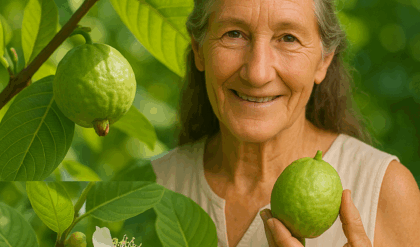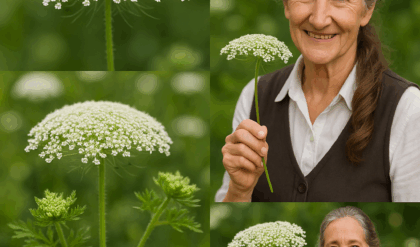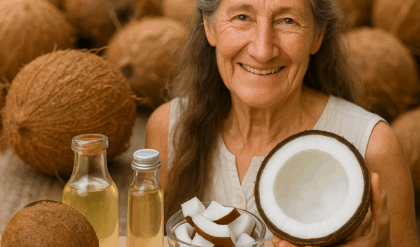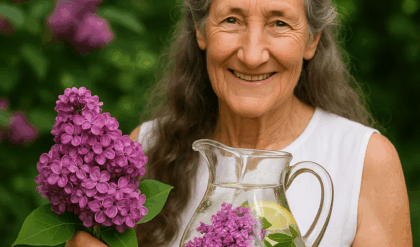🌺 What if a plant could mesmerize with its trumpet-shaped blooms yet harbor a deadly secret? *Datura stramonium*, known as thorn apple, jimsonweed, or devil’s trumpet, is a botanical enigma that has captivated and cautioned humanity for centuries. Its striking flowers and spiny seed pods conceal potent alkaloids that can heal or harm, making it a subject of fascination in medicine, folklore, and botany. Native to the Americas but now thriving globally, this nightshade family member demands respect for its dual nature. Curious about the allure and dangers of this plant? Dive into this guide to explore the health benefits, risks, and uses of *Datura stramonium*, backed by recent studies, and learn how to approach it safely.

Why Datura Stramonium Captivates and Cautions
*Datura stramonium* is a member of the Solanaceae family, alongside tomatoes and deadly nightshade. Its global spread—from Central America to Europe, Asia, and Africa—owes to its adaptability to disturbed soils like roadsides and pastures. The plant’s allure lies in its fragrant, white-to-purple flowers and spiny seed pods, but its tropane alkaloids—atropine, scopolamine, and hyoscyamine—give it a dangerous edge. Used in traditional medicine for asthma and pain relief, it’s also infamous for its hallucinogenic and toxic effects, requiring careful handling to avoid severe consequences. Recent studies highlight both its pharmacological potential and risks, underscoring its complex legacy.
Botanical Profile of Datura Stramonium
Understanding *Datura stramonium*’s characteristics helps appreciate its beauty and risks.
🌱 Appearance
– *Height*: Grows 1–2 meters tall, forming a bushy, erect structure.
– *Leaves*: Broad, dark green, lobed, with a slightly toothed edge, 8–20 cm long.
– *Flowers*: Trumpet-shaped, 6–9 cm long, white to pale purple, blooming at night with a heavy, sweet fragrance.
– *Seed Pods*: Oval, spiny capsules that split to release small, black seeds, each containing about 0.1 mg of atropine.
🌍 Habitat
Thrives in warm, temperate, and subtropical climates, often in sandy or calcareous soils. It’s common in disturbed areas like fields, roadsides, and waste grounds, flourishing in full sun.
Health Benefits of Datura Stramonium
Despite its toxicity, *Datura stramonium* has been used in controlled, traditional, and modern medicinal contexts for its pharmacological properties, primarily due to its alkaloids. Recent studies validate some of these uses, though caution is paramount.
🩺 Respiratory Relief
Historically, *Datura stramonium* leaves were smoked to treat asthma and bronchitis, as its anticholinergic alkaloids (atropine, scopolamine) relax bronchial muscles. A 2022 study notes its use in South America for asthma relief, though modern pharmacology has largely replaced it with safer alternatives.
💊 Analgesic and Anti-Inflammatory Effects
The plant’s alkaloids provide pain relief and reduce inflammation, used traditionally for rheumatism, gout, and joint pain. A 2021 study confirmed anti-inflammatory activity in leaf extracts, suggesting potential for treating hepatic inflammation in controlled settings.
🦠 Antimicrobial Properties
Ethanol extracts from leaves and seeds show significant antibacterial and antifungal activity against pathogens like *Staphylococcus aureus* and *Pseudomonas aeruginosa*, supporting traditional uses for wound healing and infections.
🩹 Wound and Skin Treatment
Topical pastes from leaves have been used in Ayurveda to treat ulcers, bruises, and skin rashes, leveraging antibacterial and anti-inflammatory effects. A 2020 review highlights its ethnomedicinal use for minor wounds, though systemic application is risky.
🧠 Neurological Applications
In low, purified doses, *Datura stramonium* seeds are used in Ayurveda for epilepsy, pain, and heart disorders after detoxification processes. Recent studies note its antiepileptic and analgesic potential, but only under strict medical supervision.
Risks and Toxicity of Datura Stramonium
The plant’s tropane alkaloids make it highly toxic, with severe risks documented in recent studies, particularly when ingested recreationally or accidentally. All parts—seeds, leaves, flowers, and roots—are dangerous, with seeds containing the highest alkaloid concentrations (3–6 mg per 50–100 seeds).
🚨 Anticholinergic Syndrome
Ingestion causes severe symptoms, including delirium, hallucinations, tachycardia, dry mouth, blurred vision, fever, seizures, coma, and potentially death. A 2024 case report of a 3-year-old Ethiopian toddler highlighted agitation, seizures, and dilated pupils after accidental seed ingestion, requiring intensive care.
🧠 Neurological and Cognitive Damage
A 2023 study on *Datura metel* (a related species) showed that chronic use increases oxidative stress in the brain, leading to cognitive deficits, memory loss, and depressive behavior in mice, suggesting similar risks for *D. stramonium*. Long-term use may increase dementia risk.
👁️ Vision and Organ Damage
Prolonged exposure causes anisocoria (unequal pupil sizes), impaired vision, and, in rare cases, cataracts. A 2011 study reported liver and spleen weight reduction in rats at high doses, indicating organ toxicity.
🚑 Recreational Abuse Risks
Teenagers and young adults seeking its hallucinogenic effects face high poisoning risks. A 2016 case study noted euphoria and visual distortions but also cognitive deficits and amnesia after seed consumption, with effects lasting 24–48 hours.
🐄 Animal Toxicity
Livestock consuming *Datura stramonium* mixed with feed can suffer fatal poisoning, as seen in 2022 incidents where cattle died after ingesting seeds, flowers, or leaves.
Uses and Preparation
*Datura stramonium* is used in controlled settings, but raw consumption is dangerous due to its toxicity. Recent studies emphasize purification processes to reduce risks.
🍵 Medicinal Tea or Extracts
In Ayurveda, detoxified seeds or leaves are boiled (125 mg per dose) for asthma or pain relief, but only under professional supervision. Raw tea is not safe.
🩹 Topical Applications
Leaf pastes are applied for wounds or joint pain in traditional medicine. A 2012 study notes their use in herbal plasters for earaches, mixed with sesame oil.
💊 Pharmaceutical Preparations
Purified alkaloids like atropine are used in modern medicine (e.g., for pupil dilation or asthma), but never in raw plant form. The U.S. Pharmacopoeia historically included *Datura stramonium* for antispasmodic effects.
Precautions and Safety Tips
Given its high toxicity, handling *Datura stramonium* requires extreme caution, especially in gardens or households with children and pets.
🩺 Consult a Professional
Never use *Datura stramonium* without medical supervision. Pregnant women, those with glaucoma, heart conditions, or neurological disorders should avoid it entirely.
🚫 Avoid Ingestion
All parts are toxic, with seeds posing the highest risk (0.1 mg atropine per seed). Even handling can cause skin irritation or absorption through mucous membranes.
🌳 Garden Safety
If grown ornamentally, keep away from children and pets. Wear gloves when handling, and remove plants from areas where accidental exposure is possible.
🚨 Seek Immediate Help
If poisoning is suspected (symptoms include delirium, rapid heartbeat, or seizures), seek emergency medical care. Treatments like activated charcoal or physostigmine may be used, but risks remain high.
Why Datura Stramonium Fascinates
*Datura stramonium* is a plant of profound contrasts—its beauty and fragrance belie a dangerous potency. Recent studies confirm its pharmacological potential, from anti-inflammatory and antimicrobial effects to traditional uses for asthma and pain, but its toxic alkaloids demand respect. While controlled extracts offer medicinal promise, raw use or recreational abuse carries severe risks, as evidenced by cases of poisoning and neurological harm. Its cultural significance, from shamanic rituals to Ayurvedic medicine, adds to its mystique, but modern gardeners and herbalists must prioritize safety.
Embrace Datura’s Mystery with Caution
🔥 Ready to admire the thorn apple’s allure from a safe distance? *Datura stramonium* captivates with its striking blooms and storied history, but its toxic nature demands vigilance. Whether you’re intrigued by its medicinal potential or wary of its dangers, this plant is a reminder of nature’s complex balance. Avoid raw use, consult professionals for any medicinal application, and keep it out of reach in gardens. Let the devil’s trumpet inspire awe, not risk, as you explore its enigmatic legacy. Here’s to appreciating nature’s power responsibly!





